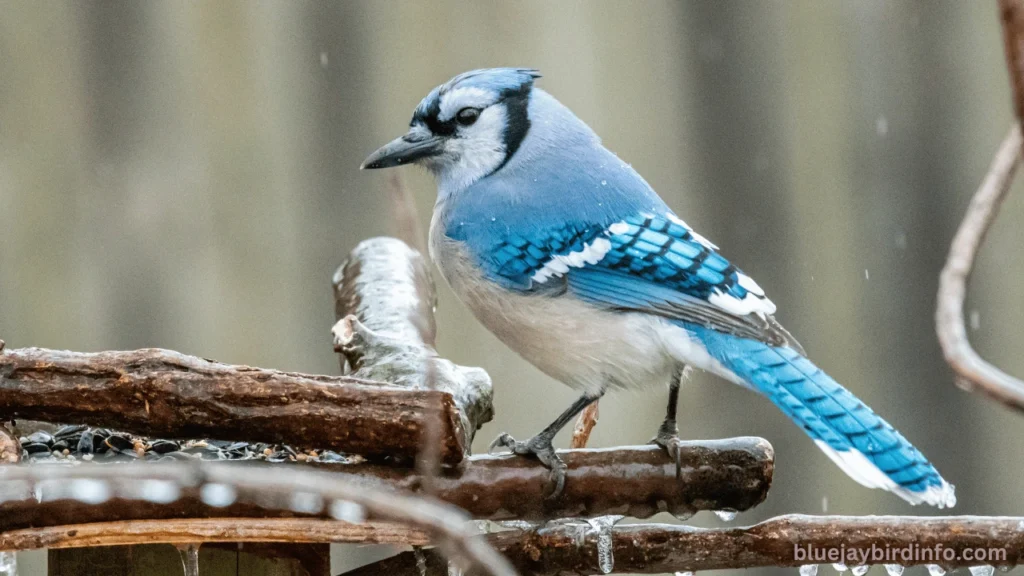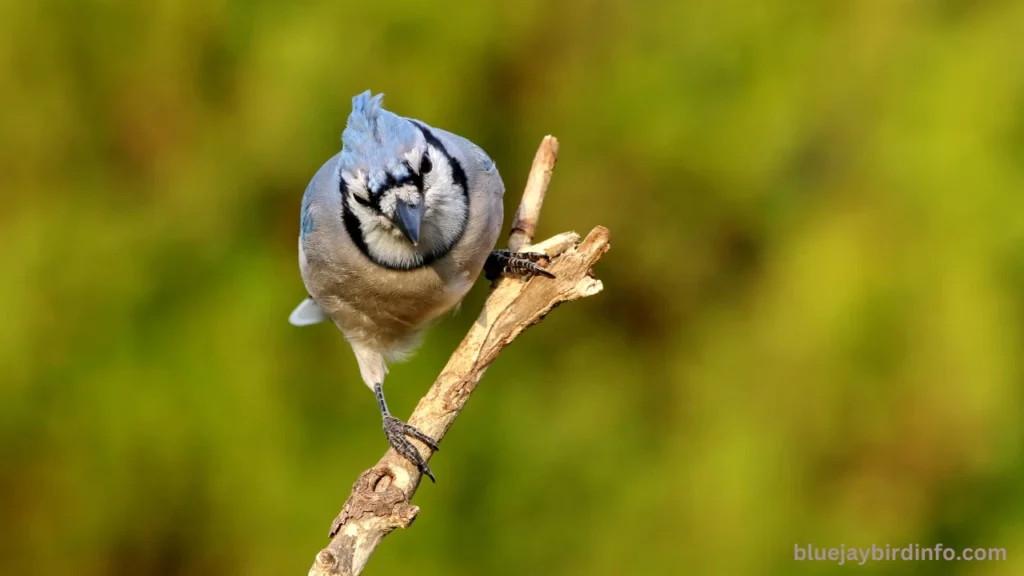Blue jays are striking creatures, instantly recognizable by their vibrant blue feathers that seem to shimmer in the sunlight.
These feathers have captivated the imagination of many, often symbolizing intelligence and protection in various cultures. Despite their abundance in many regions, the sight of a fallen blue jay feather can evoke a sense of wonder and rarity.
Each feather tells a story of the bird’s life, its foraging adventures, and the challenges it faces in its environment. So, how rare is it to find one of these beautiful feathers on the ground?
While blue jays are indeed a common sight across North America, the shedding of their feathers is influenced by various factors, making the discovery of a blue jay feather somewhat elusive.
This article will delve into the complexities surrounding the rarity of blue jay feathers, examining their abundance, the shedding patterns of these birds, and the environmental influences that contribute to the likelihood of finding a feather.
Understanding the ecology of blue jays not only enhances our appreciation for these fascinating birds but also highlights the importance of preserving their populations and habitats. From their role as seed dispersers to their contributions to local ecosystems, blue jays play a vital part in the natural world.
As we explore the rarity of blue jay feathers, we’ll uncover the delicate balance between their beauty and the challenges they face in a changing environment. Join us on this journey to discover the significance of blue jay feathers and what they mean for wildlife enthusiasts and nature lovers alike.
Contents
Blue Jay Feather Characteristics
Blue jay feathers are a marvel of nature, showcasing a stunning palette of colors that range from vibrant blues to subtle grays. The iridescent quality of their feathers, which can appear to change hues depending on the angle of light, is due to microscopic structures within the feather barbs.
Each feather is not only visually striking but also designed for functionality. Blue jay feathers are typically medium-sized, measuring about 6 to 8 inches in length for the wing feathers, and they possess a smooth texture that aids in aerodynamics during flight.
The coloration of blue jay feathers is influenced by several factors, including genetics, diet, and environmental conditions. For instance, a blue jay’s diet, which consists of berries, seeds, and insects, can affect the brightness and richness of its plumage.
Additionally, feathers are subject to wear and tear over time, which can alter their appearance and overall health. The genetics of a blue jay determines the basic color and pattern of its feathers, while environmental factors, such as sun exposure and habitat, can also play a significant role in feather maintenance and vitality.

Feathers serve multiple vital purposes in the lives of blue jays. They provide insulation, keeping the birds warm during colder months, and play a crucial role in flight, allowing them to soar gracefully through the trees and navigate their environment efficiently. Beyond these functional roles, feathers also serve as a form of communication.
Blue jays use their plumage during mating displays and to establish territory, showcasing their health and vitality to potential mates and rivals. In this way, the characteristics of blue jay feathers are not only a testament to their adaptability but also a vital component of their survival in the wild.
Blue Jay Shedding Patterns
Feather molting is a natural process that blue jays undergo to replace old or damaged feathers, ensuring their plumage remains functional and aesthetically pleasing. Typically, blue jays experience a complete molt once a year, usually in late summer to early fall, as they prepare for the changing seasons.
During this time, they gradually shed their feathers, which can take several weeks to complete. The timing of this molt is crucial, as it allows blue jays to maintain their ability to fly and regulate their body temperature as environmental conditions shift.
Several factors can influence the rate of feather shedding in blue jays. For instance, age plays a significant role; younger birds may molt more rapidly as they grow and develop their adult plumage. Similarly, the overall health of the bird is paramount; a malnourished or sick blue jay may experience delayed molting or poor feather quality.
Environmental conditions, such as seasonal changes and food availability, can also impact molting patterns. Birds in regions with harsher winters may synchronize their molt to ensure they are fully feathered before the colder months set in.
Human activities pose additional challenges that can alter feather shedding patterns in blue jays. Habitat loss due to urban development and pollution can stress these birds, potentially affecting their health and ability to molt effectively.
In areas where food sources are compromised, blue jays may struggle to find the necessary nutrients for proper feather growth, leading to abnormal molting patterns or insufficient feather replacement.
Understanding these shedding patterns is essential for conserving blue jays and ensuring their populations remain healthy and thriving in a rapidly changing environment.
Abundance and Distribution
Blue jays are predominantly found across North America, with their range extending from Southern Canada down to the Eastern United States and parts of Mexico. Their population density varies significantly across different regions, with areas that provide abundant food resources and suitable habitats supporting larger numbers.
Urban environments often see a higher concentration of blue jays due to the availability of bird feeders and other food sources, which can sometimes lead to them adapting their behaviors to thrive in more populated areas.
Several factors influence blue jay populations, including habitat availability and food resources. Blue jays thrive in deciduous forests, but they are also comfortable in suburban settings where they can find diverse food sources, such as fruits, nuts, and insects.
However, predation from larger birds of prey and loss of habitat can significantly impact their numbers. Predation not only reduces their survival rates but also affects their breeding success, as fewer adults can lead to fewer young being raised to maturity.
Additionally, the looming threat of climate change poses challenges for blue jay populations and their distribution. As temperatures rise and weather patterns shift, the habitats blue jays rely on may become less suitable for their survival.
For instance, changes in migration patterns and the availability of certain food sources could lead to a decline in their populations in some areas. Moreover, as climate change continues to disrupt ecosystems, blue jays may face increased competition for resources, making it essential to monitor these factors to ensure their long-term viability in the wild.
Feather Collection and Preservation
Collecting blue jay feathers can be a fascinating pursuit for bird enthusiasts and nature lovers alike, but it’s crucial to approach this activity with an understanding of the ethical considerations and potential legal restrictions involved.
Many regions have laws that protect native birds, making it illegal to collect their feathers without appropriate permits. These regulations are in place to ensure the conservation of bird populations and their habitats, as well as to prevent illegal trafficking of wildlife.
Before attempting to collect any feathers, it’s essential to research local wildlife protection laws to ensure compliance and avoid unintended consequences.
Once you have collected blue jay feathers ethically and legally, preserving them properly is vital to maintain their beauty and integrity. Storage is important; feathers should be kept in a cool, dry place, ideally in an acid-free container to prevent damage.
When cleaning feathers, gentle methods are preferred; using a soft brush or damp cloth can remove dirt without compromising the feather structure. For display, consider using shadow boxes or glass frames that protect the feathers from dust and damage while allowing their vibrant colors to shine.
Beyond personal collection, blue jay feathers hold significant value in scientific research, education, and art. Researchers utilize feathers to study bird health, migration patterns, and environmental changes.
In educational settings, feathers serve as valuable tools for teaching about biodiversity and ecology. Moreover, artists often draw inspiration from the stunning coloration and intricate patterns of blue jay feathers, using them in various creative projects that celebrate nature’s beauty.
By understanding the importance of ethical collection and proper preservation, we can appreciate blue jay feathers while contributing to conservation efforts and the enrichment of our communities.
Environmental Factors and Rarity
Environmental factors play a crucial role in determining the rarity of blue jay feathers and the overall health of their populations. Habitat loss, often caused by urban development and deforestation, significantly reduces the natural environments where blue jays thrive.
This loss not only impacts their nesting sites but also diminishes the availability of food resources, making it harder for these birds to survive and reproduce. Additionally, pollution can affect their health and breeding success, as exposure to harmful chemicals and waste can lead to decreased fertility and increased mortality rates.
Furthermore, diseases can spread more easily in fragmented habitats, compounding the challenges faced by blue jays and their feather production.
In response to these threats, conservation efforts play an essential role in protecting blue jay populations and ensuring the sustainability of their feathers. Initiatives aimed at restoring habitats, reducing pollution, and promoting biodiversity are crucial for supporting the long-term survival of blue jays.
Organizations focused on wildlife conservation work to raise awareness about the importance of maintaining healthy ecosystems and advocate for policies that protect both birds and their habitats.
By participating in these efforts, individuals can help safeguard blue jays and their beautiful feathers, contributing to a balanced ecosystem where wildlife can thrive. Ultimately, a concerted effort towards environmental conservation not only enhances the chances of spotting blue jay feathers but also promotes a healthier planet for future generations.

Conclusion
In conclusion, this article has explored the rarity of blue jay feathers by examining their characteristics, shedding patterns, abundance, and the environmental factors that influence their availability.
While blue jay feathers are visually striking and hold ecological significance, their rarity is shaped by a combination of factors including habitat loss, pollution, and the effects of climate change.
Additionally, understanding the complexities of feather collection and preservation sheds light on the ethical considerations that come into play when interacting with these beautiful birds.
Ultimately, appreciating blue jays and their feathers goes hand in hand with acknowledging their role in our ecosystems.
Protecting blue jays is not just about saving a single species but about fostering a rich and diverse environment that supports countless other forms of wildlife.
As we strive to understand blue jay ecology, we reinforce the importance of conservation efforts aimed at preserving their populations and habitats.
We encourage you to support wildlife conservation efforts in your community and beyond. Take the time to appreciate the beauty and ecological significance of blue jay feathers.
Whether through supporting local conservation organizations, participating in citizen science projects, or simply enjoying the sight of these birds in your backyard, every effort counts in ensuring that blue jays continue to thrive and enchant future generations.
Also, read other articles related to Blue Jay Habits!
FAQ’s
What do blue jay feathers look like?
Blue jay feathers are known for their striking blue coloration, with intricate patterns that include shades of black and white. Their texture is smooth and they vary in size depending on the type of feather.
Why are blue jay feathers considered rare?
Blue jay feathers are considered rare due to factors such as molt cycles, environmental influences, and habitat loss. These factors can affect the availability of feathers in certain regions.
How often do blue jays molt their feathers?
Blue jays typically undergo a molt process annually, shedding old feathers to make way for new ones. The timing and rate of molting can vary based on factors such as age and health.
Can I collect blue jay feathers legally?
There are ethical considerations and potential legal restrictions regarding the collection of blue jay feathers, as they are protected under various wildlife conservation laws. It’s essential to check local regulations before collecting any feathers.
What should I do if I find a blue jay feather?
If you find a blue jay feather, consider preserving it ethically by storing it properly. Always remember to respect wildlife laws and refrain from taking feathers from protected birds.
What impact does climate change have on blue jay populations?
Climate change can affect blue jay populations by altering their habitat availability, food resources, and nesting conditions, potentially leading to shifts in their geographic distribution.








